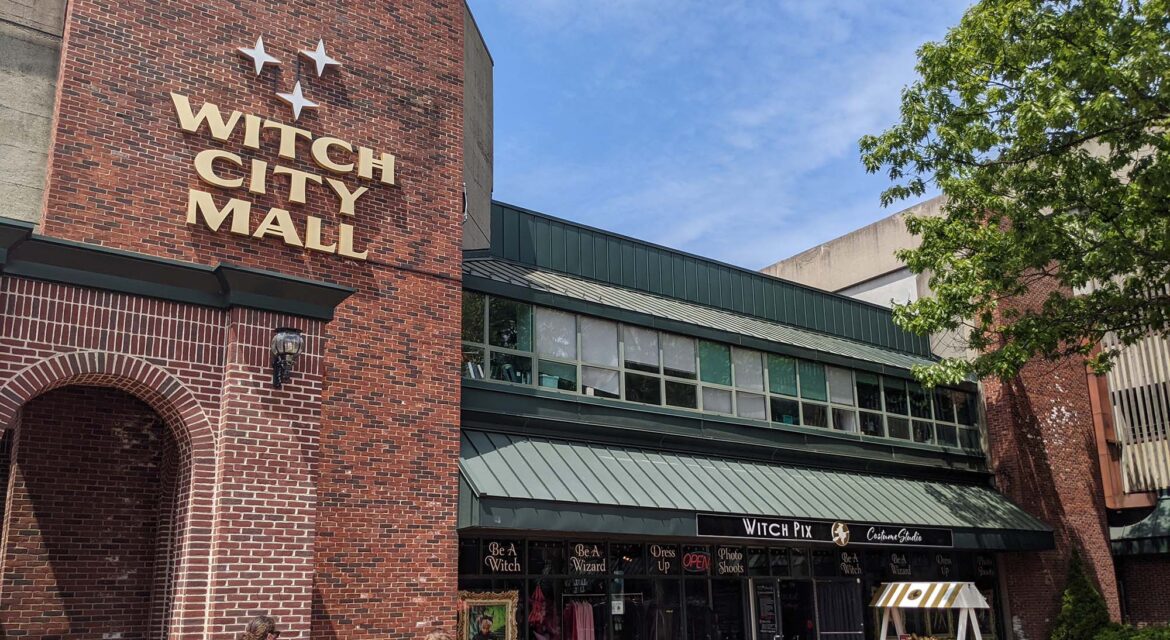 The fateful real-life events that took place in the late 1600s near the modern city of Salem, Massachusetts, have come to define the “Witch City” identity for Salem. While the tragedy associated with Salem Witch Trials compelled the Salem community to distance itself from this history for centuries, embracing it as part of the “Witch City” identity has cultivated numerous opportunities that have enabled a major benefit to the modern community.
The fateful real-life events that took place in the late 1600s near the modern city of Salem, Massachusetts, have come to define the “Witch City” identity for Salem. While the tragedy associated with Salem Witch Trials compelled the Salem community to distance itself from this history for centuries, embracing it as part of the “Witch City” identity has cultivated numerous opportunities that have enabled a major benefit to the modern community.
History that Went from Being Ignored to Embraced
 The Salem Witch Trials saw over two hundred people accused of being a witch, which was a crime at the time. Thirty were found guilty, with twenty people being executed. Dedicated in 1992, the Salem Witch Trials Memorial was designed to honor these victims and provide a remembrance of the event. However, this memorial was the culmination of an endeavor to embrace the history of the area that had been actively ignored.
The Salem Witch Trials saw over two hundred people accused of being a witch, which was a crime at the time. Thirty were found guilty, with twenty people being executed. Dedicated in 1992, the Salem Witch Trials Memorial was designed to honor these victims and provide a remembrance of the event. However, this memorial was the culmination of an endeavor to embrace the history of the area that had been actively ignored.
In the late 1800s, the city of Salem had made plans to build a memorial on the site that was believed to be the place where the witch trials executions occurred. It fell through on account of feeling of the community that the whole affair was too horrible to contemplate. Changes to this outlook came from an unlikely source.
Bewitched was an American TV show about a witch who marries an ordinary mortal man. The show filmed a series of episodes on location in Salem after a fire shut down its Hollywood set, directly connecting it to the city and community. The popularity of the show would help compel a different position about the Salem Witch Trials and would see the Salem community actively embrace this history. This connection culminated with the installation of the Elizabeth Montgomery Statue in 2005.
That development showcased how Salem has embraced the “Witch City” identity, which now defines the culture and economy of the modern city.

The Witchcraft Capital of the World
 Recognized as the witchcraft capital of the world, the “Witch City” identity is pervasive across the area. Salem’s police cars are decorated with witch insignia while numerous businesses use witch imagery and even directly reference “Witch City” with icons that are directly connected to this identity.
Recognized as the witchcraft capital of the world, the “Witch City” identity is pervasive across the area. Salem’s police cars are decorated with witch insignia while numerous businesses use witch imagery and even directly reference “Witch City” with icons that are directly connected to this identity.
For the Salem community, this identity is about much more than slogans and icons. It has embraced being a modern witch community, as Salem has an enormous population of Neo-pagan practitioners. The current community is built upon guiding principles of harming none and supporting social justice.
Visiting Salem during Halloween has become a ritual for many, with a month-long spree of haunted events taking place. All are family-friendly, as various tour guides and groups make an effort to connect audiences with the city’s darker past along with plenty of present-day fun.
Numerous museums and businesses have been created as a result of the identity that “Witch City” has cultivated, showcasing what it can mean for an identity to directly and indirectly define a community in ways that create opportunities and engagement on multiple levels.

Defining a Legacy
 The twenty people who lost their lives in 1692 for being witches is just as tragic of a fate today as it was then, which is undoubtedly why the legacy of the event was for so long obscured. The “Witch City” identity highlights how such a complicated legacy can be utilized in a way that positively defines the culture and economy of a city to the benefit of everyone.
The twenty people who lost their lives in 1692 for being witches is just as tragic of a fate today as it was then, which is undoubtedly why the legacy of the event was for so long obscured. The “Witch City” identity highlights how such a complicated legacy can be utilized in a way that positively defines the culture and economy of a city to the benefit of everyone.


